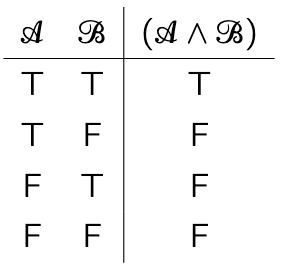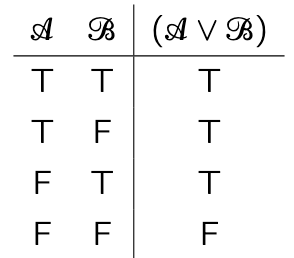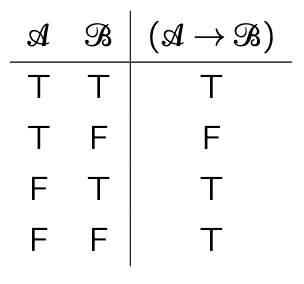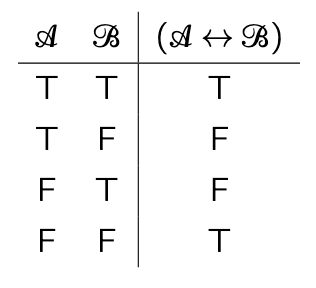PHIL 210
1/56
There's no tags or description
Looks like no tags are added yet.
Name | Mastery | Learn | Test | Matching | Spaced |
|---|
No study sessions yet.
57 Terms
Logic
the study of what follows from what in virtue of their logical form
Valid
no case where all its premises are true and the conclusion is false
Invalid
there is at least one premise where all the values are true and the conclusion is false
Metalanguage
a language used to describe another language
Affirming the consequent
a fallacy of switching the cause and the consequence
it is not the case that
is not
does not
‘both A and B’
and
but
even though
although
‘either A or B or both
or
unless
If ‘A’ then ‘B’
Is A then B
If A, B
A only if B
provided A, B
B provided A
B if A
A if and only if B
if and only if
just in case
Conjunction TT

Disjunction TT

Conditional TT

Biconditional TT

Negation TT

Base clause
Every sentence letter is a sentence, called an atomic sentence
Second clause
Is A is a sentence , then -A is a sentence
Third clause
If A and B are sentences, then, (A /\ B) is a sentence
Fourth clause
If A and B are sentences, then, (A \/ B) is a sentence
Fifth clause
If A and B are sentences, then, (A → B) is a sentence
Sixth clause
If A and B are sentences, then, (A ←> B) is a sentence
Seventh clause
Nothing else is a sentence
when is TFL valid
no valuation in which all premises are T and the conclusion is F
TFL is invalid
if there is at least one valuation that makes all premises T and the conclusion F
Equivalence
two sentences A and B are equivalent in TFL iff every valuation either makes both A and B true or makes both A and B false
(A → B)
( - B → - A)
( A /\ B)
-(-A \/ -B)
-(A /\ B)
(-A \/ -B)
-(A \/ B)
(-A /\ -B)
(A \/ B)
-(-A /\ -B)
A ←> B
((A → B) /\ (B → A))
— — A
A
Tautology
when the TFL is true on every valuation
necessary truth
tautology
Contradiction
when the TFL is false on every valuation
necessary falsehood
contradiction
Tautology and entailment
when there is a tautology then the statements always entail the other
converting tautology to a sentence

Contingent
A sentence that is neither tautology or a contradiction
Joint satisfiability
when there is at least one valuation which makes multiple sentences true
Jointly Unsatisfiable
When they are not jointly satisfiable
Proof
a finite sequence of sentences, such that each element in this sequence is either a premise or obtained from earlier sentences by the application of an inference rule
Proof system
a formal framework for proofs, consisting of a formal language and a fixed set of inference rules
Distinction between l- and l=
the l- is a syntactic rule
the l= is a semantic rule
sound proof-system
when the semantic notion of deduction corresponds to the semantic notion of entailment
Introduction ‘I’
introduces a new kind of connective into a sentence
Elimination ‘E’
eliminates a connective from a sentence
relationship between tautologies and premises
a biconditional relationship where whatever sentence you can prove from no premise will be a tautology
soundness
if an argument is sound then we may assume that if it is provable then it is also entailed
completeness
if an argument is complete then we may assume that if it is entailed then it is also provable